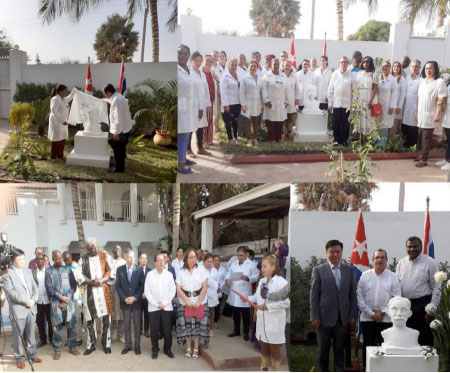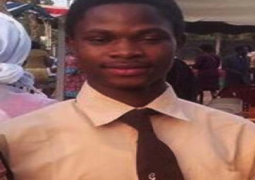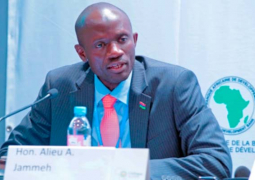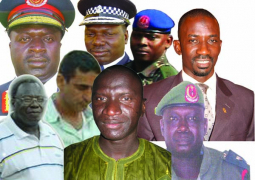
Banjul
- The Cubans who work in the Gambia are happier as of this January 28 because
for the first time in history they will have in this beautiful land of West
Africa a bust of the National Hero of the Greater Antilles, José Martí,
unveiled on occasion of the 167th anniversary of his birth.
The
sculpture of the Apostle, created by Gambian artist Francis Colmbegan Colley,
was inaugurated this Tuesday at the Banjul Headquarters of the Cuban Diplomatic
legation of the Caribbean nation.
In the emotional solemn act, in which Martí’s
poems, interventions in tribute to his work and fight for the independence of
his country and Our America, and of him over Africa, were mixed as the blood of
Cubans and the peoples of this continent of the future.
The
event was attended by a representation of the Cuban Medical Brigade in the
Gambia (BMC), the Minister of Health H.E. Ahmadou Lamin Samateh, Deputy Madi
Ceesay, the Chinese Ambassador H.E. Ma Jiannchun, the Turkish Ambassador H.E.
Tolga Bermek, the President of the Gambia-Cuban Friendship Association, Modou
Grant, in addition to several of its members, and young graduates in the
Caribbean Island, among other guests.
Cuban
collaborators, and Gambian friends, deposited white flowers before the
Apostle’s bust, after being unveiled by the Ambassador here of the Dean of the
Antillean archipelago, Rubén G. Abelenda, and by the head of the BMC, Anaris
Martha Odio.
Touching
were the poems of Martí, declared in Spanish and English, by young members of
the BMC, as well as a text about his life and work.
The
activity was closed by Ambassador Abelenda, who cited several phrases written
by the Cuban National Hero about Africa and Africans, including the following:
“There
is in his horror and joy something supernatural and wonderful that does not
exist in the other races, and he remembers in his movements and looks the
majesty of the lion: there is in his affection a loyalty so sweet that he does
not think of dogs, but in the pigeons: and there are in their passions such
clarity, tenacity, intensity, which resemble those of the sun’s rays”.




